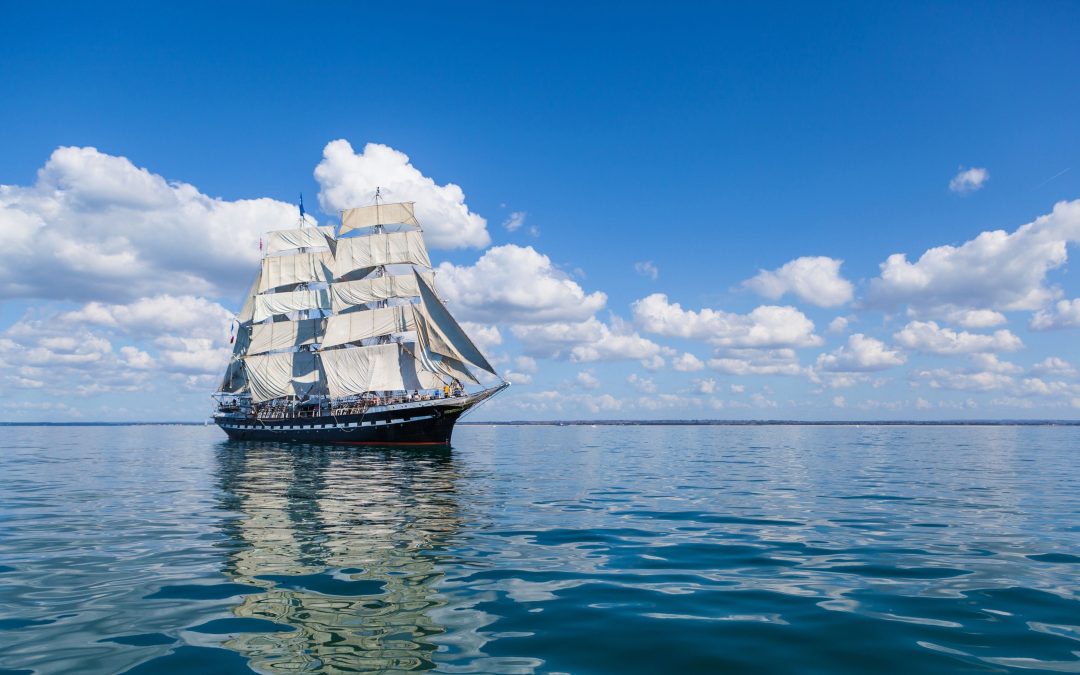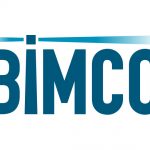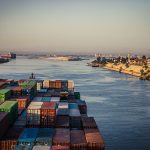On July 15, the UHL Fable was named at the Baakenhöft Terminal near the Elbphilharmonie concert hall in the Port of Hamburg.
“We are very happy to be naming yet another vessel in our home port of Hamburg,” Andreas Rolner, Managing Director of United Heavy Lift, commented.
“The UHL FABLE completes our F900 Eco-Lifter fleet, which stands for United Heavy Lift’s commitment to promoting sustainable shipping… There is a strong global demand for alternative energy sources, and we are proud to be part of the supply chain for green energy.”
On its maiden voyage from Tianjin and Dongzhao to Cuxhaven (Germany), the multipurpose (MPP) heavy lift vessel transported a project cargo of rotor blades for onshore wind turbines for the UHL customer, Danish manufacturer Vestas Wind Systems.
Like its sister vessel, UHL Fresh which entered service in January 2024, the UHL Fable was built at the CSSC Hudong shipyard in Shanghai.
The F900 Eco-Lifter class is designed and built according to the latest technological standards, the company said. It is equipped with advanced systems and economical propulsion technology.
The 150-meter-long UHL Fable also features an IMO Tier III certified main engine. In accordance with the international standard, up to 95 percent of the vessel’s NOX emissions are washed out while diesel particles are burnt off in the catalytic converters. With bunker consumption of 7 metric tons/9 knots, 10 metric tons/12 knots and 21 metric tons/15 knots, the Eco-Lifter is characterized by low bunker consumption compared to similar heavy lift vessels.
As the newest addition to the now 19 vessel-strong UHL F900 fleet, the UHL Fable can be fueled with biodiesel, which makes the operation of the main engine climate-neutral.
Overall, the carbon footprint of United Heavy Lift’s F900 Eco-Lifter fleet, which has an average age of three years, is 30 to 50 percent lower compared to other fleets in the heavy lift sector.
High demand for heavy lift services
The shipping company said it has attuned its fleet to the requirements of the growing market for eco-friendly breakbulk and heavy lift ocean transport.
“We are supporting the energy transition with our vessels, and the transport of onshore wind turbines is part of our core business,” Andreas Rolner continued.
“The market for this is developing well, with demand driven by the desired expansion of renewable energies. Our customers have already reserved extensive capacities for wind power: We are already 30 percent booked in this segment until 2028.”
The shipowner believes that the reason why market players are currently securing tonnage so early is that while there is high demand for heavy lifter services, hardly any new vessels are expected for this segment in the foreseeable future.
“Shipbuilding sites are expensive and also scarce because they are occupied by newbuilds such as tankers or bulkers. What’s more, heavy lift vessels are also complicated to build,” he explained.
The tonnage and crane capacity of the UHL-F900 vessels also make the fleet suitable for cross-sectoral use like container transport.
United Heavy Lift operates a versatile fleet of 24 heavy lift vessels with lifting capacities of 160 to 900 metric tons, the core of which are the F900 Eco-Lifter sister vessels. Founded in 2015, United Heavy Lift is part of the UNITED GROUP based in Hamburg’s HafenCity.
Source: Offshore Energy






